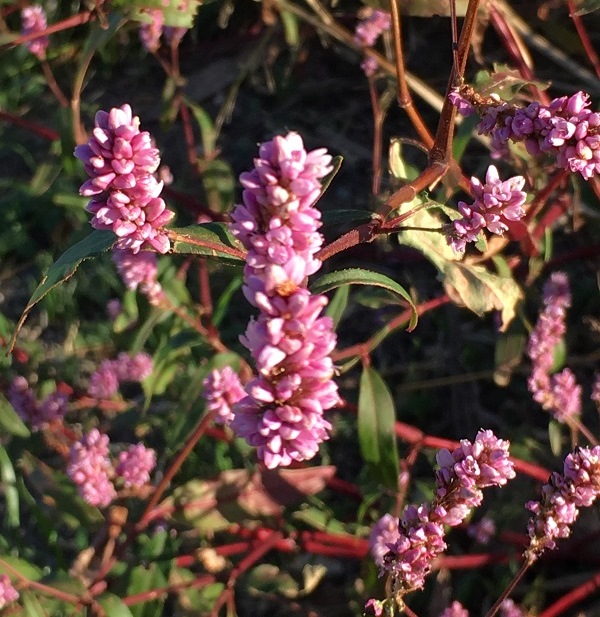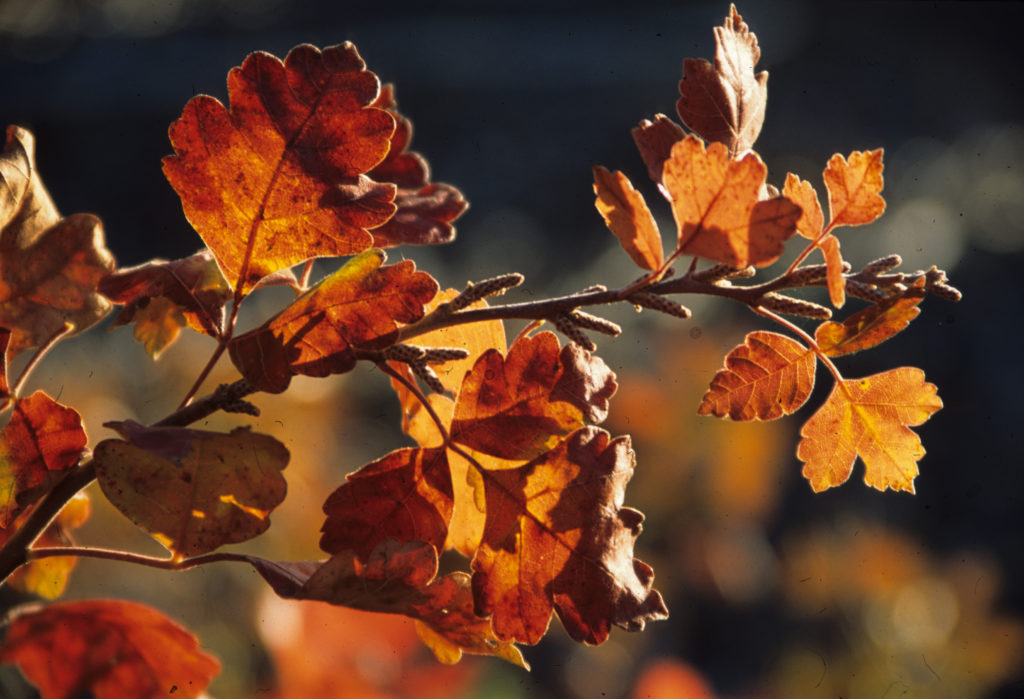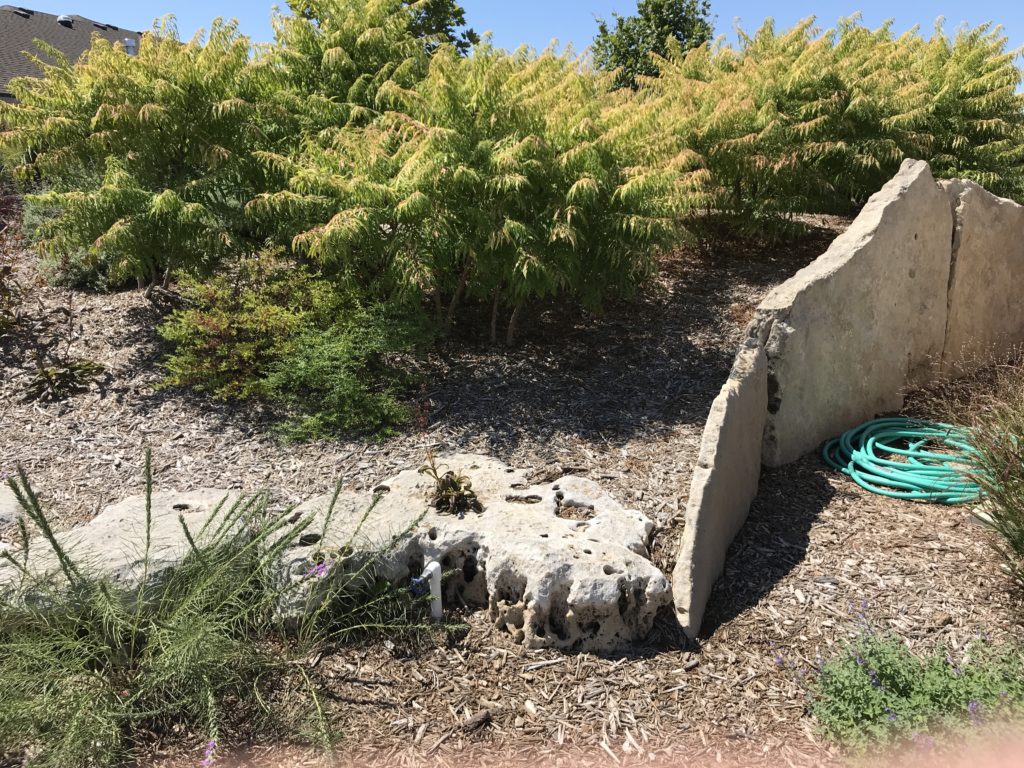Fall is the season of change. The verdant green of the prairie melts to lifeless, barren forms – a stark contrast to the landscape that once looked so alive. But for now, as change happens, we are blessed to partake in hues and colors of striking beauty. Trees explode with vibrant shades of orange, red and yellow. Native grasses develop vivid colors and attractive blooms. Asters, goldenrods and sunflowers speckle the horizon. It is the crescendo of the whole year.
Maybe you have noticed these dramatic changes happening, too. Plants that once blended into their surroundings are suddenly visible. It’s as if someone turned a light on them. Even the prairies and roadsides display beautiful shades of gold, purple, apricot, olive, and copper with autumn wildflowers, shrubs, and curling, rustling grasses. Here are a few that I have seen lately along the roadsides of south-central Kansas.
There is no other shrub that signals fall more than sumac. The blood red leaves and clusters of seeds are striking. They are like beacons along the roadsides. If only we could advertise with these shrubs, because they catch my eye every time.
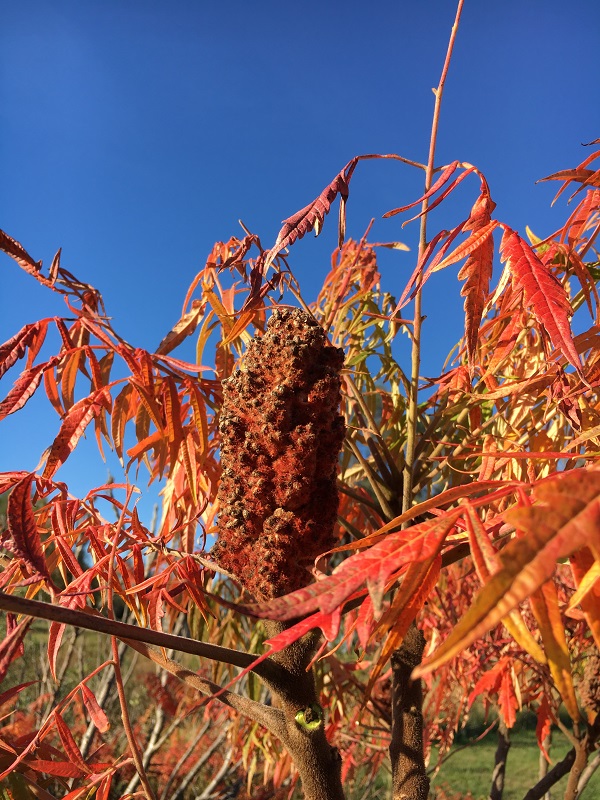
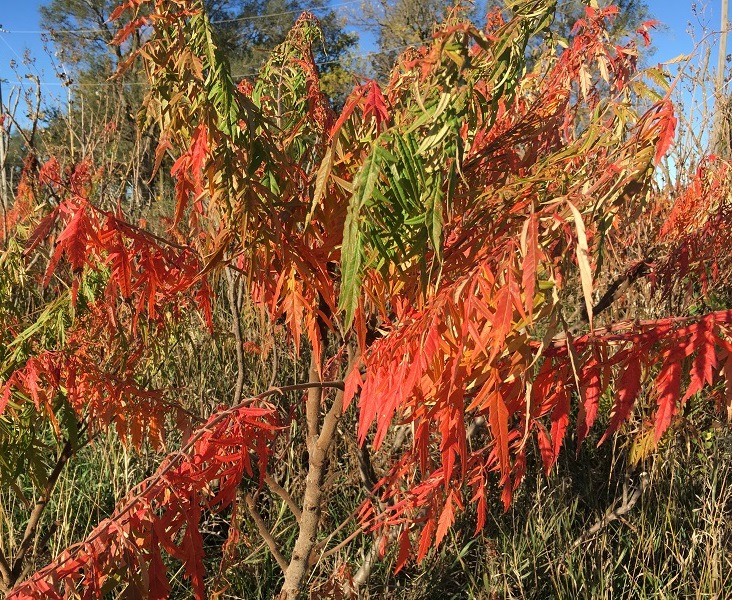
Dogbane
This close relative of milkweed has so much going for it. Dogbane is host for many insects. In fact, the US Department of Agriculture Natural Resources Conservation Service (USDA NRCS) ranks Dogbane’s value to pollinators as ‘very high’. Dogbane typically grows two to three feet tall and develops into larger colonies. Right now, they are a bright yellow, which makes them stand out even more. Even the common milkweeds have turned a nice golden color.
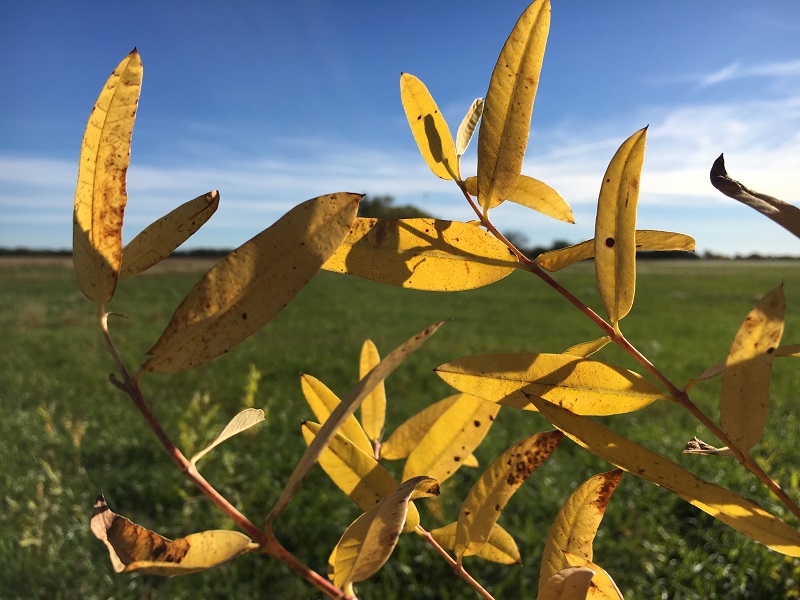
The “King of Grasses” is big and bold. The reddish purple stems begin to change and set the landscape ablaze with their intense colors. Look for the distinctive “Turkey Foot” seed head, too.
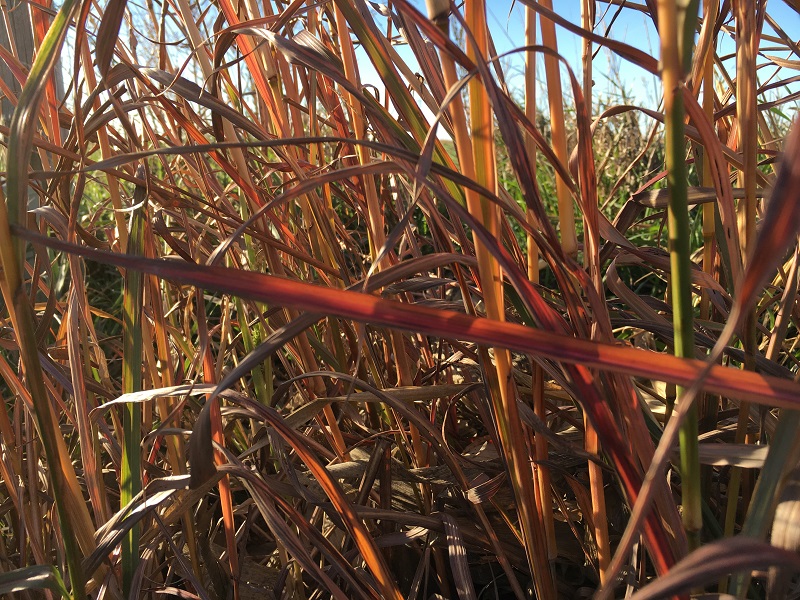
“I took a long walk north of the town, out into the pastures where the land was so rough that it had never been ploughed up, and the long red grass of early times still grew shaggy over the draws and hillocks. Out there I felt at home again.” -Willa Cather, My Antonia
There are a number of outstanding native grasses that provide late season interest, but Switchgrass Panicum virgatum is one of the more common grasses in roadside ditches. It grows to a height of 3-6 feet and turns orange, yellow and fiery red-tipped shades in the fall. The persistent airy blooms and attractive fall colors make this an attractive grass in the landscape.
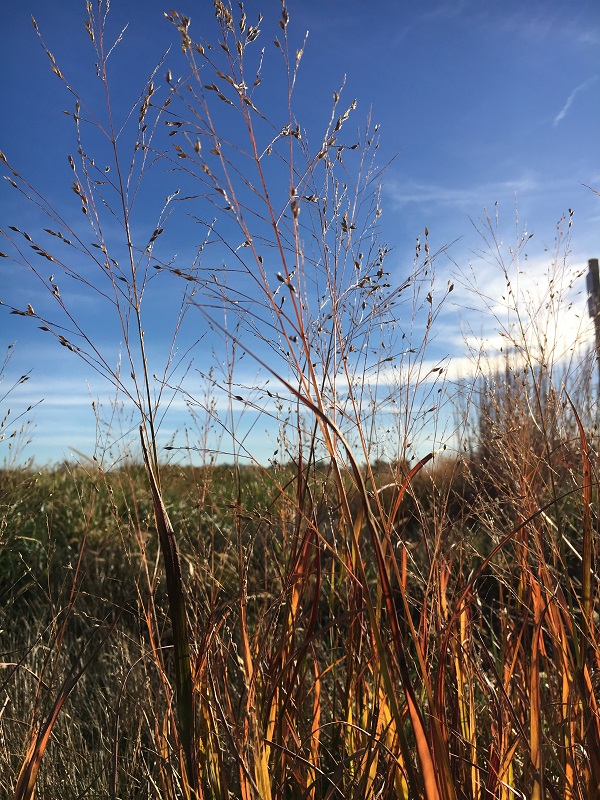
This tree is along many roadsides in south central Kansas. It is still incredible to see those huge hedge apples dangling from the branches and scattered on the road. The tough demeanor of this tree including its thorns made it ideal as a living fence. Many were planted during the Dust Bowl days as part of WPA projects to prevent soil erosion in the Great Plains states.
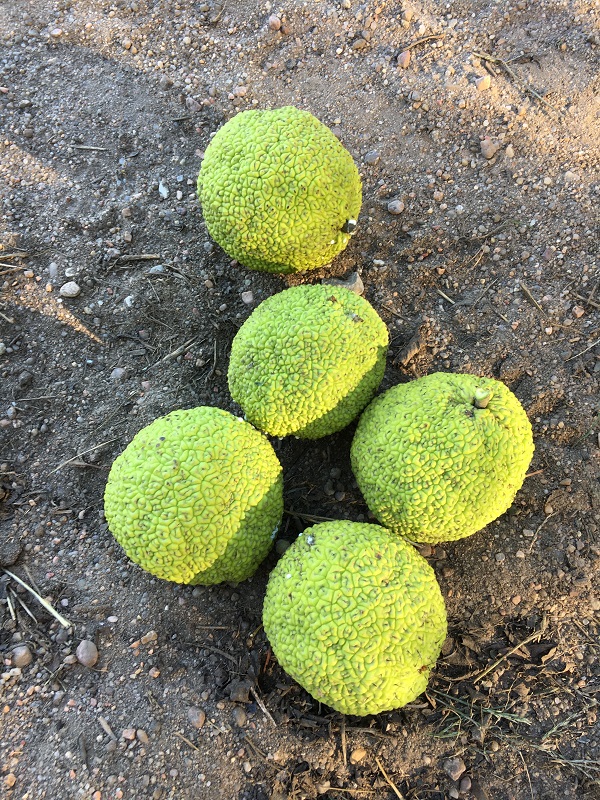
Asters are the grand finale to the prairie garden. Heath asters are one of the last asters to bloom. The diminutive white flowers cover the entire plant, making them look like snow mounds in the prairie. They are one of the last great feeding opportunities for bees, butterflies, and other pollinators before they migrate or go dormant for the winter.
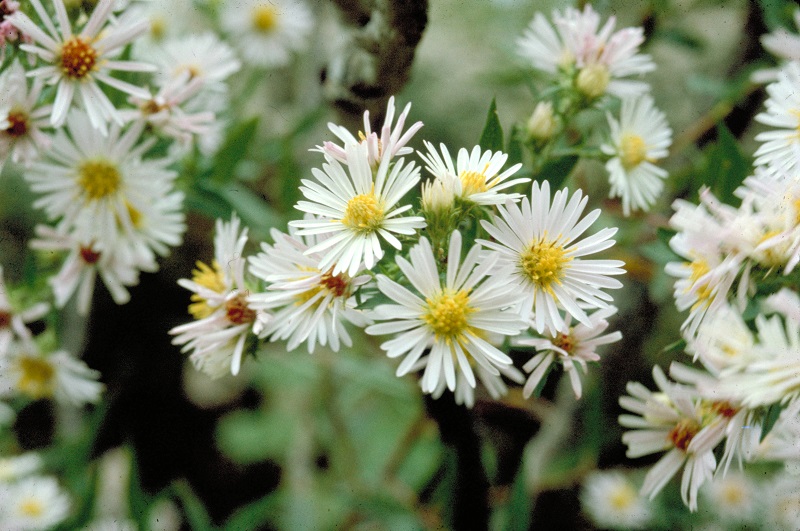
Although each season is different, autumn is a very special time. Life has come full circle, from spring through summer and ultimately ending in the fall. It is the perfect time to enjoy all that is changing around us. It is a time to take in sights, sounds and smells of the prairie and connect anew with the natural world.
Bonus Plant: Pink smartweed
Pink smartweed is prolific, growing wild in nearly every roadside ditch. The bright pink flowers and red stems are very striking. They thrive in damp or wet sites, but it is an annual. If you want some for your landscape, collect the seed after the pink flowers fade.
